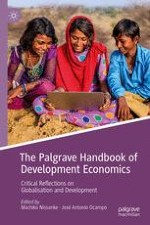2019 | OriginalPaper | Buchkapitel
15. Critical Reappraisal of the Aid-Debt-Growth Debate: Retrospect and Prospects for Low-Income Countries
verfasst von : Machiko Nissanke
Erschienen in: The Palgrave Handbook of Development Economics
Verlag: Springer International Publishing
Aktivieren Sie unsere intelligente Suche, um passende Fachinhalte oder Patente zu finden.
Wählen Sie Textabschnitte aus um mit Künstlicher Intelligenz passenden Patente zu finden. powered by
Markieren Sie Textabschnitte, um KI-gestützt weitere passende Inhalte zu finden. powered by
